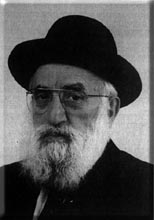Beit Midrash
- Torah Portion and Tanach
- Bamidbar
- Korach
- Torah Portion and Tanach
- Bamidbar
- Chukat
The answer can be found, quite simply, in the first two words of the sedra, "Vayikach Korach – and Korach took." But what did he take; the pasuk never tells us!
Some want to say he took other rebels along with him; or that he took his life & legacy & destroyed it, etc. But I suggest that the words speak for themselves: "Korach took" – Korach was a taker! Whatever he could take, he took: Money, power, fame. It was never enough, for once you become a taker, there is no end to it, you can’t stop. You just keep taking & taking, beyond all reason & rationale.
But Levi’im are not meant to be takers - they are givers. They devote themselves selflessly to the people, to the nation, to Hashem. They are the spiritual leaders, the conduit for the offerings, the lifeline to G-d. And so when Korach abdicated his role & became a taker, Hashem took it all away from him – his money, his family, his life.
And now on to Chukat. This is a sedra that is centered around Death. Miriam dies. Ahron dies. Moshe is given his "death sentence" after he strikes the rock. And of course, the opening section deals with the Para Aduma, the red heifer which is killed & whose ashes purify those who come into contact with the dead.
All these items fall under the general category of "Chukat" or "Chok," laws & phenomenon that are mysterious, unknowable, inscrutable. And Death is most paramount among them. Why did Hashem create Life – be it in animal, vegetable or human beings - if all are destined to die? Is this not cruel? Knowing that from the moment we are born we have an incurable illness – it’s called "Life!" – can surely lead to sadness, depression, melancholy, existentialism.
But the Para Aduma ritual comes to teach us that there are cycles of life and rebirth. The cow dies, but its ashes give spiritual life to others. Ahron dies, but the Kohanim he produced live on. Moshe dies, but his Torah is eternally true, a Torat Chayim; in short, we live beyond ourselves.
This Shabbat is the 25th anniversary of the Lubavitcher Rebbe’s death. But, truth be told, the Rebbe is not "dead." For as long as his Torah is spread, as long as his emissaries carry out his mission, & the values he espoused emanate throughout the world, he lives on in the purest sense. Tzadikim b’mitatan k’ruim Chayim; the righteous, even in death, are called "Chayim."

Rav Kook in the Weekly Portion - A Life of Wealth and Honor
Rabbi Yehoshua Ze'ev Hess | 1 Tamuz 5785
Korach – He has a point
Rabbi Yonatan Kirsch | Cheshvan 7 5782

Not Gaining from the Disgrace of Another
Rabbi Yossef Carmel | Sivan 5767






















